 Looking for an easy-to-use, versatile amp that can handle any style of guitar playing? Check out the Fender Champion 40 Watt Guitar Amplifier. With 40 watts of power, a 12” Fender Special Design speaker and two channels, this amp is perfect for practice or performing on stage.
Looking for an easy-to-use, versatile amp that can handle any style of guitar playing? Check out the Fender Champion 40 Watt Guitar Amplifier. With 40 watts of power, a 12” Fender Special Design speaker and two channels, this amp is perfect for practice or performing on stage.Table of Contents
Fender Champion 40 User Manual
Pros & Cons of Fender Champion 40
Overall, the Fender Champion 40 is a great amp for the money. It’s versatile, easy to use, and sounds great. If you’re looking for an affordable amp that can handle any style of playing, the Champion 40 is a great option.
Buyer’s Guide
Channels and Features
The Fender Champion 40 has two channels: clean and drive. The clean channel is your standard clean tone, while the drive channel gives you a little more distortion for those heavier styles of music. The amp also has a variety of effects built in, including reverb, delay, chorus, and more. You can control all of these features with the simple controls on the front of the amp.
The Main Controls
The Fender Champion 40 has three main controls: volume, tone, and drive. The volume control allows you to adjust the overall level of the amp.
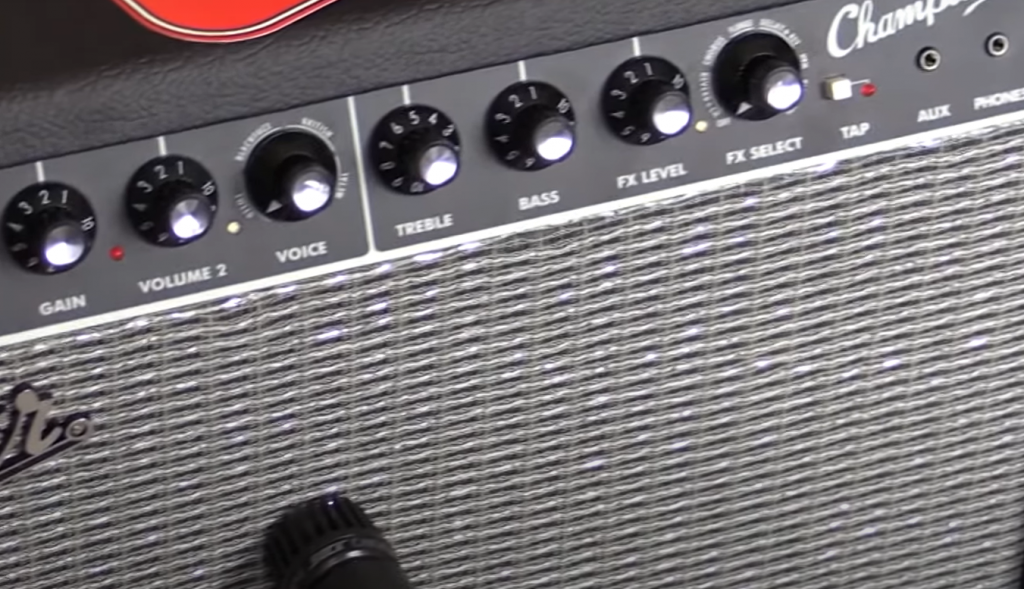
The tone control gives you a broad sweep of tones to choose from, while the drive control adds distortion to the sound.
Channels
The Fender Champion 40 has two channels. The first channel is clean and the second channel is overdrive. The overdrive channel can be turned off so that you can use the clean channel by itself.
The clean channel has a bright switch that can be turned on or off. When the bright switch is on, it adds treble to the sound. The overdrive channel also has a bright switch, but it does not do anything when it is turned on.
The two channels share a three-band EQ. The EQ controls are bass, middle, and treble. The EQ can be bypassed so that the amp sounds like it does not have an EQ.
Gain
The Champion 40 has a straightforward gain structure. The only way to change the amount of overdrive is by turning the knob. This makes it simple to get a great sound without having to work with a lot of various settings.
You can get light crunch or full-on metal tones with the overdrive sound. The clean channel on this amplifier is excellent; it can get quite loud without distorting the sound.
The gain structure is easy to use and gets the job done well. With little effort, you can achieve a fantastic sound from this amplifier without having to spend too much time tweaking settings.[1]
Treble
The treble and bass controls are very simple.
These controls are very effective and make it easy to dial in a good sound.The tones on this amp are very good. The clean channel is bright and articulate, while the overdrive channels have a lot of midrange punch. The overall tone is very well balanced and sounds great at any volume level.
Overall, the treble & bass controls are extremely simple but effective. If you want to get a fantastic sound out of this amplifier without spending a lot of time fiddling with the settings, they’ll do the job for you. [2]
Middle
The middle control is basic and easy to use. The only way to adjust the amount of midrange is by using the knob. This makes it simple to obtain a decent sound without having to worry about adjusting a lot of different settings.
Light to heavy crunch, this midrange great for a range of metal tones. The clean channel likewise has excellent fidelity and can produce a tremendous amount of sound without distorting.
Overall, the middle control is extremely simple and effective. It’s easy to get a great sound out of this amp without having to spend a lot of time tweaking settings.
Bass
The bass control is also very simple. There is only one knob for adjusting the amount of bass. This makes it very easy to get a good sound without having to fiddle with a lot of different settings.
The bass sounds great and can go from light crunch to full-on metal tones. The clean channel is also very good and can get very loud without breaking up.
Reverb
The Champion 40 comes with a single spring reverb, which is more than enough for most players. If you’re looking for a bit more depth, you can always add an external reverb pedal. The amp also features an effects loop, so you can add your favorite pedals to the mix.
Fat Switch
The Fat Switch is a great feature that allows you to thicken up the sound of the clean channel. This is perfect for players who want to add a bit more girth to their tone.
FX
The FX Loop is a fantastic additional feature that allows you to connect your favorite pedals together. This is ideal for musicians who want to extend the tonal range of their instrument.
It stands for effects, and the Champion 40 has an FX loop that allows you to add your favorite pedals to the mix. This is perfect for players who want to add a bit more flexibility to their tone.Speed and Intensity
The Speed and Intensity controls are very simple. There are only two knobs, one for speed and one for intensity. These controls are very effective and make it easy to dial in a good sound.
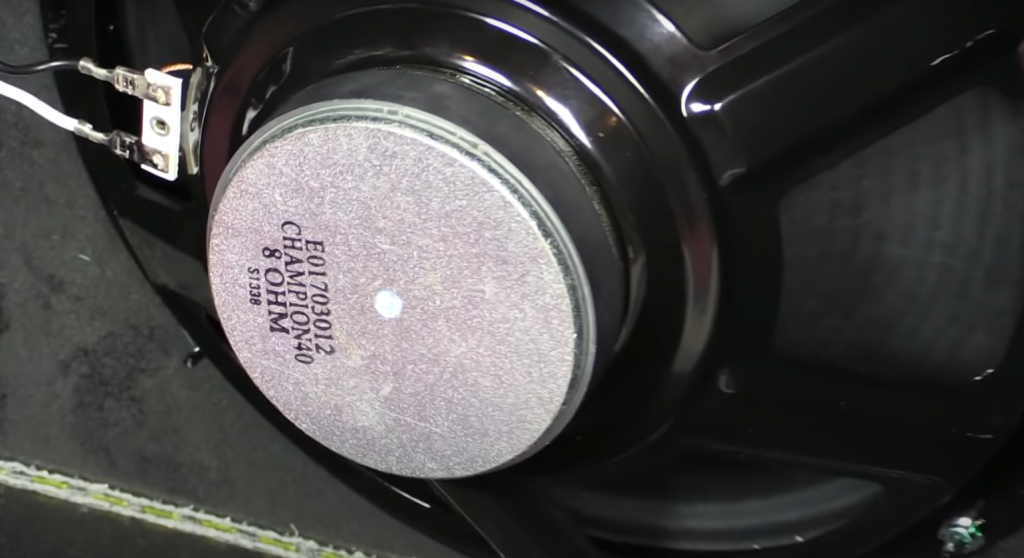
The tones on this amp are very good. The clean channel is clear and forceful, while the overdrive channels provide a lot of mid-range oomph. The tone as a whole is extremely well balanced, and it sounds fantastic at any volume setting. [3]
Sound Quality
The sound quality of this amp is excellent. The clean channel is very articulate and the overdrive channels have a lot of midrange punch. The overall tone is very well balanced and sounds great at any volume level.
The build quality is also very good. This amp feels solid and looks like it will last for many years.
Overall, the sound quality of this amp is excellent. It’s easy to get a great sound out of this amp without having to spend a lot of time tweaking settings.
How to Set Up Fender Champion 40
To set up your Fender Champion 40, start by placing the amp in a central location.
Next, plug your instrument into the input jack and turn on the power switch. Finally, adjust the volume and tone knobs to your preference. Finally, if you’re using an external effects pedal, insert it into the effects loop.
This will help to ensure that your sound is as good as it can be.
How to Make a Fender Champion 40 Sound Better
If you’re looking for ways to make your Fender Champion 40 sound better, here are a few tips:
- Use an external effects pedal to add more flexibility to your tone.
- Place the amp in a central location so that the sound can evenly disperse throughout the room.
- Adjust the volume and tone controls to taste.
- If you’re using an extension speaker, make sure it’s placed close to the amplifier.
Overall, these are just a few simple tips that can help you get the most out of your Fender Champion 40. Find the sound that works for you by playing around with different settings. A bit of adjusting will have this amp sounding great in a snap.[4]
Understand your amp
The first thing you need to understand is what your amp is trying to do. If you want a cleaner sound, lower the volume and use EQ to get your desired tone. However, if you’re looking for something dirtier, crank up the volume and let the amplifier work its magic.
Knowing what your amp is capable of will go a long way in helping you get a great sound out of it. So take some time to experiment with different settings and see what sounds best. With a little bit of trial and error, you’ll be able to get this amp sounding great in no time.
Ease off on the gain
One of the most common mistakes players make is cranking up the gain too high. This will result in a muddy sound that is difficult to control. So if you’re looking for a clean sound, ease off on the gain and use the EQ to shape your tone. On the other hand, if you’re looking for a dirty sound, crank up the volume and let the amp do its thing.
By easing off on the gain, you’ll be able to get a much clearer sound out of your amp. Also, by using the EQ to shape your tone, you’ll have a lot more control over your sound. So experiment with different settings and see what sounds best for your playing style.
Boost your mids
If you’re looking for a fuller sound, try boosting the mids. This will give your tone more body and make it easier to cut through the mix. To do this, simply turn up the mid knob on your amp.
By boosting the mids, you’ll be able to get a fuller sound out of your amp that is sure to cut through the mix.
Placement is key
Where you place your amp can have a big impact on the sound. If you’re looking for a fuller sound, try placing the amp in a corner. This will help to trap the sound and make it bounce around the room. On the other hand, if you’re looking for a more focused sound, try placing the amp in the middle of the room.
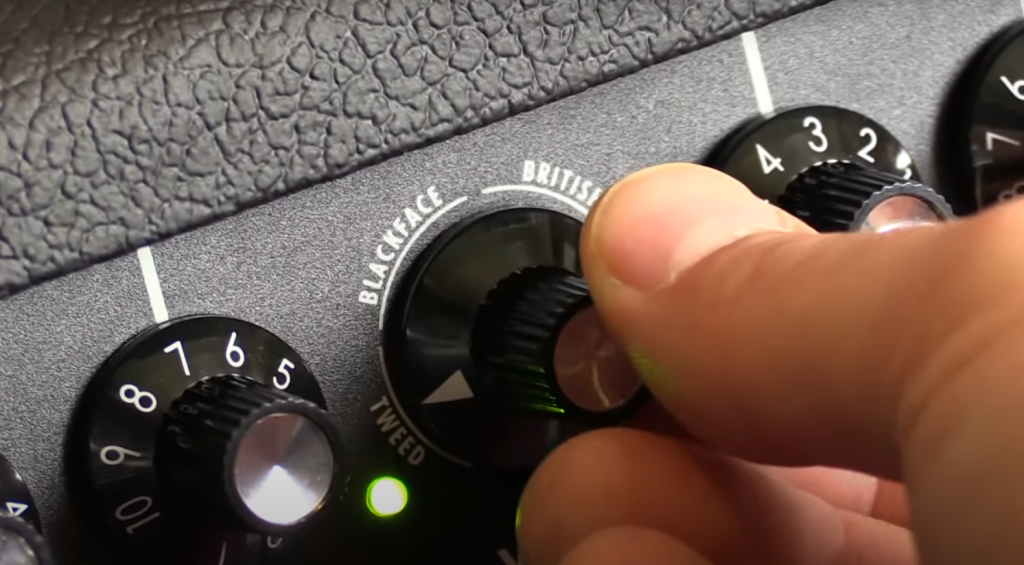
Experiment with different placements and see what sounds best for your playing style. With a little bit of trial and error, you’ll be able to get this amp sounding great in no time.
Consider adding pedals
Adding an external effects pedal can really open up your sound. If you’re looking for more flexibility, try adding a distortion pedal. This will give you the ability to get a dirty sound without cranking up the gain on your amp. On the other hand, if you’re looking for more options when it comes to clean sounds, try adding a chorus pedal. This will give your tone more depth and make it easier to create lush sounding textures.
By adding an external effects pedal, you’ll be able to get much more out of your amp. So if you’re looking for ways to make your Fender Champion 40 sound better, this is definitely something to consider.
Care for your cables
One of the most important things you can do to keep your amp sounding great is to care for your cables. Make sure you’re using high quality cables that are in good condition. Old or damaged cables can be the root of many sound problems, so if your Amp isn’t sounding too great, check your cables before anything else.
Caring for your cables is an important part of keeping your amp sounding great. If you maintain them in excellent shape, you’ll be able to avoid a slew of issues with your sound.[5]
Select the right pickup
The pickup you use can have a big impact on your sound. If you’re looking for a warm sound, try using a neck pickup. On the other hand, if you’re looking for a brighter sound, try using a bridge pickup.
Experiment with different pickups and see what sounds best for your playing style.
Accessories
There are a few accessories that can really help you get the most out of your Fender Champion 40. One is a footswitch. This will allow you to easily switch between clean and dirty sounds without having to reach down and adjust the controls on your amp. Another is a cover. This will help to protect your amp from dust and dirt, keeping it in excellent condition for years to come.
If you’re looking for ways to make your Fender Champion 40 even better, consider investing in a few accessories. A footswitch and cover are two great options that are sure to enhance your playing experience.
Troubleshooting Tips for Fender Champion 40 Problems
If you’re having trouble getting a good sound out of your Fender Champion 40, there are a few things you can try. First, make sure all the connections are secure. Loose cables can cause all sorts of problems with your sound. Next, check the condition of your cables. If they’re old or damaged, they may be causing issues with your sound quality. Finally, if you’re still having trouble, consider taking your amp to a qualified technician for help.
No Sound
If your Fender Champion 40 is not producing any sound, there are a few things you can check. First, make sure the power cord is plugged in and that the amp is turned on. Next, check all the connections to make sure they’re secure. Finally, if you’re still having trouble, take your amp to a qualified technician for help.
Weaker/Fluctuating Sound
If your Fender Champion 40 is producing a weaker or fluctuating sound, there are a few things you can try. First, check the condition of your power cord and make sure it’s not damaged. Next, check all the connections to make sure they’re secure.
Input Switch Not Working
First, check that the input switch is turned on. If it is, then try unplugging and replugging the amp into the power source. If that doesn’t work, then you may need to replace the input switch. You can find a replacement switch at your local electronics store or online.
If you’re looking for a great sounding amp that won’t break the bank, then the Fender Champion 40 is a great option. It’s versatile enough for any style of music and has plenty of power for small gigs and rehearsals.
Popping And Crackling Sounds
The Fender Champion 40 is a great sounding amp, however there are some reports of popping and crackling sounds coming from the unit. These sounds can be caused by various factors, such as:
- Dirty or corroded contacts
- Loose wires
- Faulty speakers
- Incorrectly adjusted levels
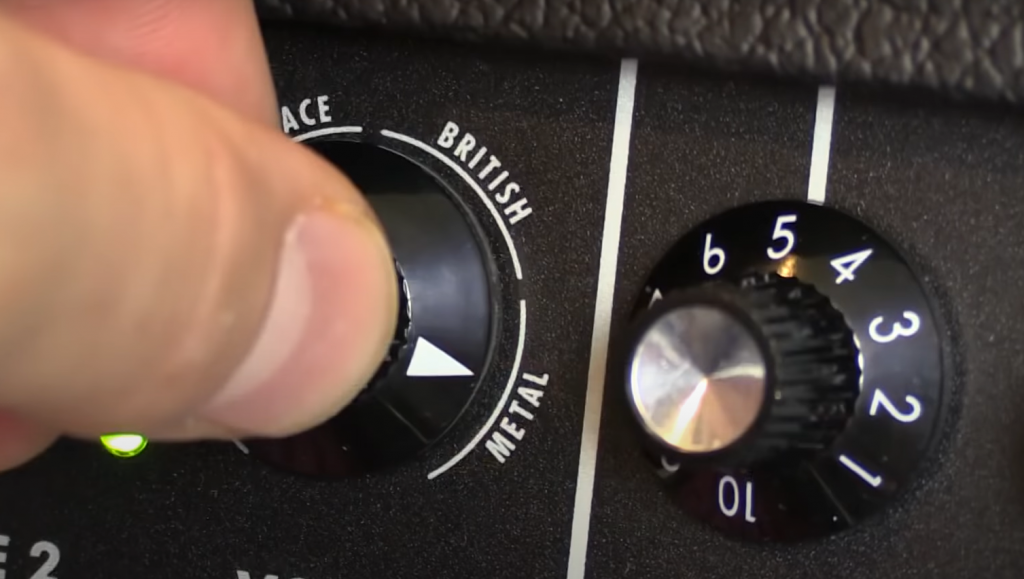
If you are experiencing these kinds of problems, it is recommended that you take your unit to a qualified technician for further diagnosis and repair.
FAQ
Is the Fender Champion 40 a modeling amp?
No, the Fender Champion 40 is not a modeling amp. It’s a great sounding amp that’s perfect for practice and small gigs. It has two channels (clean and dirty), reverb, and a headphone jack.
What is the difference between Fender Champion 20 and 40?
The main difference between the Fender Champion 20 and 40 is the power. The Champion 20 is a 20-watt amp while the Champion 40 is a 40-watt amp. Both are great sounding amps, but the extra power of the Champion 40 makes it better suited for small gigs and rehearsals.[6]
Can you use a Fender Champion 40 for bass?
Yes, the Fender Champion 40 can be used for bass. It has a dedicated bass input and sounds great with both electric and acoustic basses. Additionally, the built-in overdrive provides a nice growl when playing distorted bass lines.
Is a 40 watt tube amp loud enough?
Yes, a 40 watt tube amp is plenty loud for most applications. It will easily fill a small room or rehearsal space with sound. If you need more volume, there are larger amps available, but the Fender Champion 40 should be plenty loud for most people.
Does more watts mean better sound?
Not necessarily. More watts simply means that the amp can produce more volume. The sound quality will depend on the design of the amp and the quality of the components used. Also, keep in mind that a louder amp does not necessarily mean a better sounding amp.
What can damage an amplifier?
One of the most common questions we get asked is, “What can damage an amplifier?” The answer is actually quite simple – overheating. When an amplifier gets too hot, it can cause the internal components to expand and contract, which can eventually lead to breakage. That’s why it’s important to keep your amp in a cool, dry place, and to never leave it running for extended periods of time without supervision.
Another thing that can damage an amplifier is physical impact. Dropping or bumping your amp can dislodge internal components and cause shorts circuit.
Lastly, improper wiring can also damage an amplifier. If you’re not experienced in working with electrical components, we recommend that you have a professional do the wiring for you. Trying to wire an amplifier yourself can result in serious injury or even death if you don’t know what you’re doing. [7]
Related Video: Fender Champion 40 Guitar Amplifier Demo
Conclusion
The Champion 40 is a great choice for beginner guitarists and those who are looking for an affordable amp. It has a range of features that will allow you to get the most out of your practice time, including multiple channels, reverb, and delay. Plus, it’s small and lightweight enough to take with you wherever you go. If you’re in the market for an entry-level amp that won’t break the bank, the Fender Champion 40 should be at the top of your list. Have you tried this amp? What did you think? Let us know in the comments below.
References:
- https://www.sweetwater.com/store/detail/Champ40–fender-champion-40-40-watt-1×12-inch-combo-amp
- https://unboxguitars.com/fender-champion-40-review/
- https://bestguitarsnow.com/fender-champion-40/
- https://oldtimemusic.com/fender-champion-40-review/
- https://www.gearank.com/gear/fender-champion-40-watt-guitar-amp
- https://instrumentalglobal.com/fender-champion-20-vs-40/
- https://www.diyaudio.com/community/threads/how-easy-is-it-to-damage-my-amplifier-or-speakers.270473/

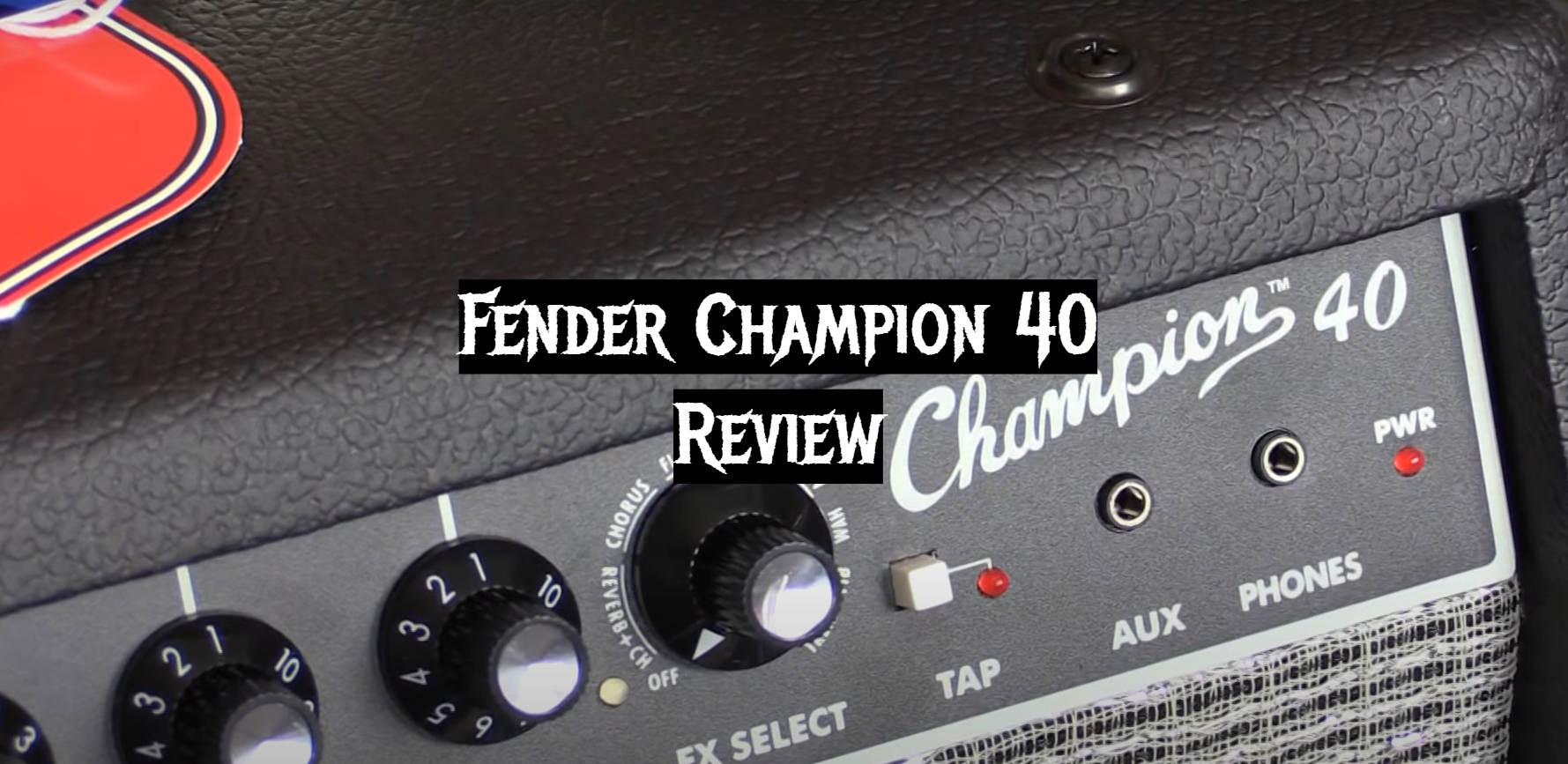


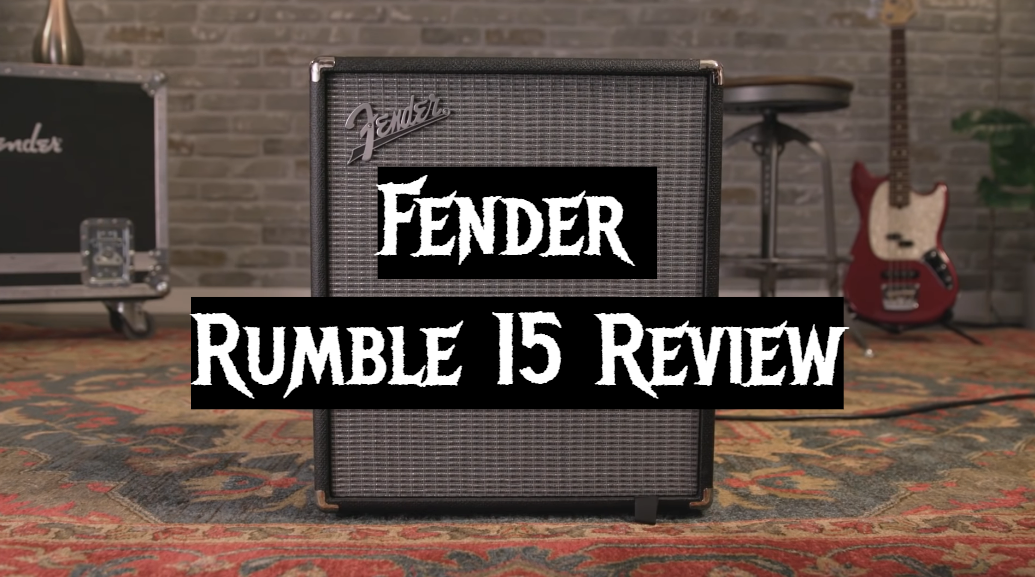
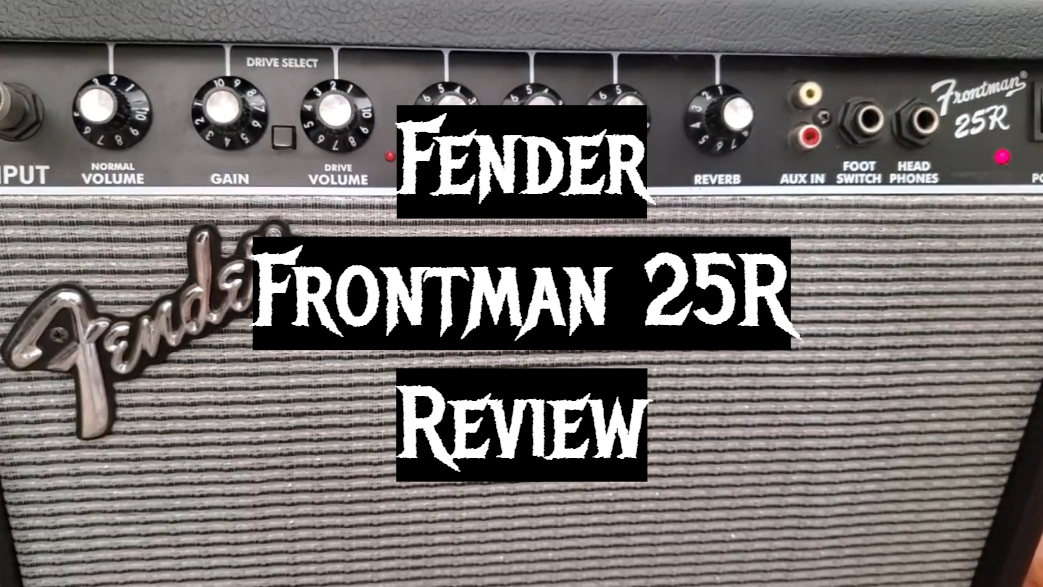
Leave a Reply